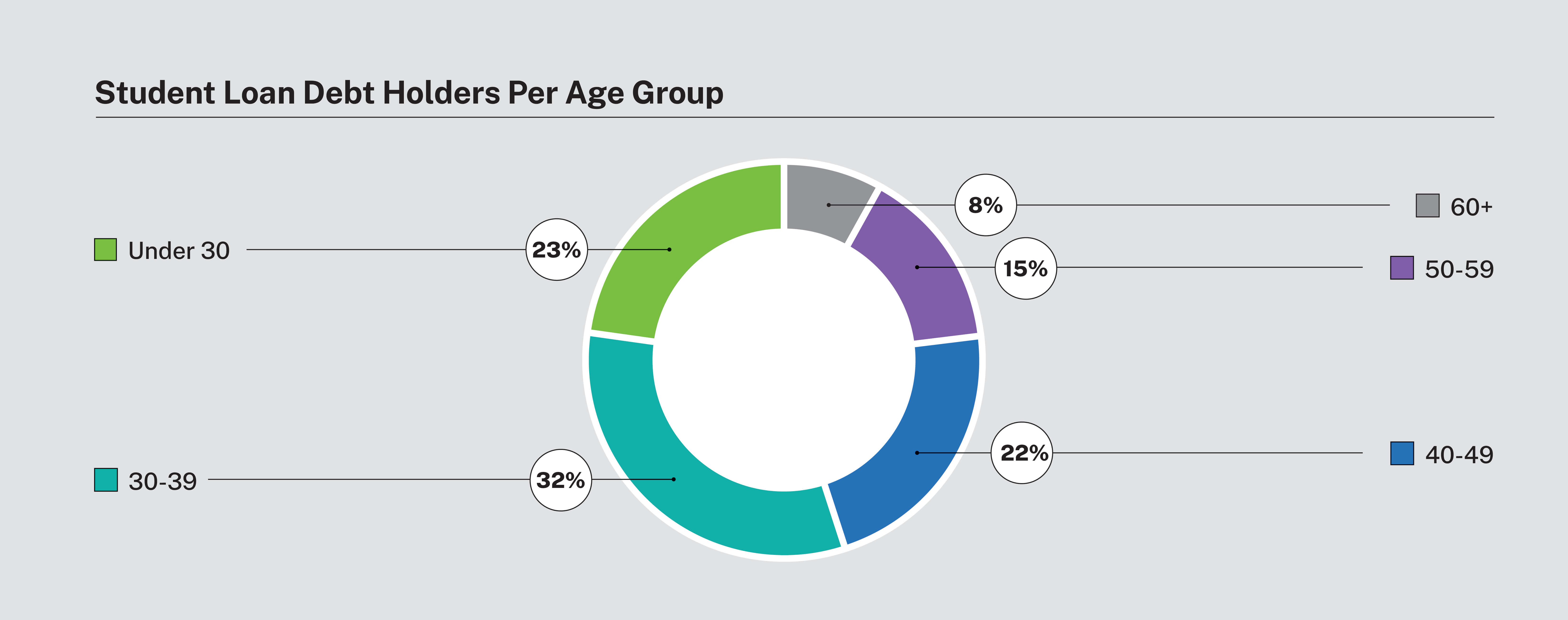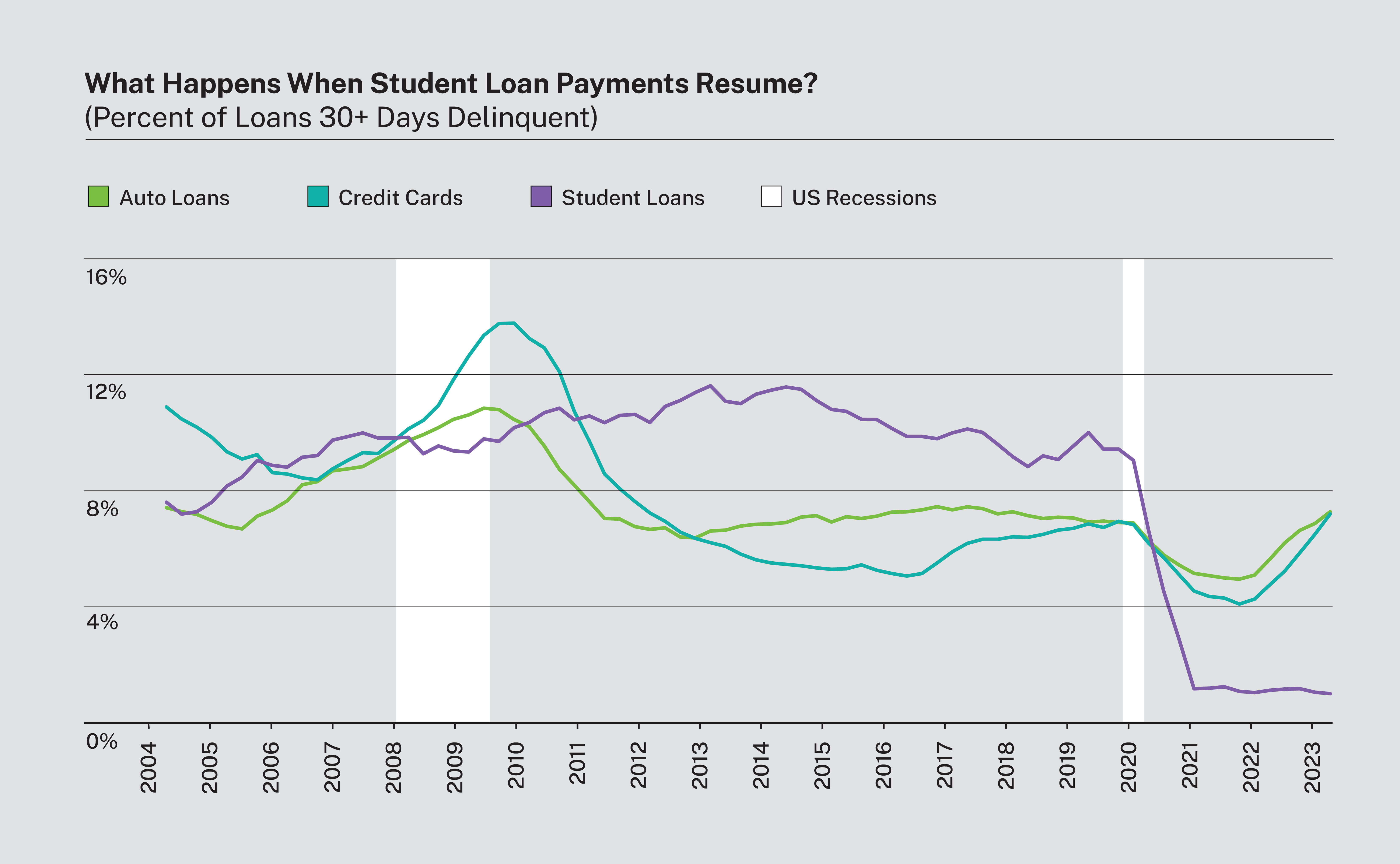Since March 2020, millions of Americans have been living in a period of forbearance for student loan repayment. Interest rates have been set at 0% over this three-year period for all qualifying loan programs. Over the course of this pause, about 1.6 trillion dollars of student loan debt is outstanding, and less than 1% of people continued their payments through the pause. This allowed borrowers to contribute to spending and saving elsewhere in their personal finances.
The grace period is now coming to an end after Congress passed a law stating payments will resume accruing interest on September 1, 2023, and will become due starting in October.
The State of Student Loans
Roughly 28.8 million Americans carry public student loan debt owed to the Department of Education. It is important to note, of this 28.8 million, only 23% are recent college graduates. Accounting for over 50% of student debt are the age cohorts 30-39 and 40-49. Within this group there is a large number of consumers that have deferred their debt, likely due to extended education, such as graduate school, medical school, or law school.
The last 23% of borrowers are made up of people over the age of 50. This group consists of people who took on loans to support their children or grandchildren’s academic career. The majority of this cohort has small balances of debt left to be paid.

What Does This Mean for the Average American Consumer?
The resumption of student loan payments in the coming months threatens consumer health and spending, which could be made worse should the economy slow, and the labor market weaken.
Economists estimate a typical monthly loan payment will be between $210 and $314, which is equivalent to a 4%-5% pay cut off of U.S. median household income before taxes. This will be more impactful to households than the single year rise in inflation. While sustained income growth can help mitigate this “pay cut,” in reality, most of professional’s income growth has been lost to recent high inflation. From March 2021 to February 2023, the inflation rate surpassed the real wage growth by more than 2% at times.
Despite strong wage growth and generally low unemployment, consumer auto loan and credit card delinquencies are on the rise. Thus far in 2023, we have already started to see a substantial increase in auto and credit card delinquencies (90+ days) for the 18-29 and 30-39 age cohorts. Consequently, we have seen the rejection rate for credit applicants increase to 21.8%, its highest level since June 2018. Additionally, auto loan rejections increased to 14.2% from 9.1% in February 2023. Prior to the pandemic and payment pause, student loans had the highest delinquency rates of any consumer credit category. Once forbearance ends, we anticipate student loan delinquencies to eventually return to prior levels and spill into other credit categories as some consumers struggle with what in many cases will be a meaningful increase in their monthly financial obligations.

Analysis: Manning & Napier. Source: Bloomberg (03/31/2004 – 06/30/2023).
Student debt is a massive burden, one of the largest debts to consumers following mortgages. Although only a subset of consumers holds student loans, they are still a threat to marginal growth and overall consumer health. You can learn more about repayment plan options and how borrowers can prepare here.
Enjoying this information? Sign up to have new insights delivered directly to your inbox.
This material contains the opinions of Manning & Napier Advisors, LLC, which are subject to change based on evolving market and economic conditions. This material has been distributed for informational purposes only and should not be considered as investment advice or a recommendation of any particular security, strategy or investment product. Information contained herein has been obtained from sources believed to be reliable, but not guaranteed.



